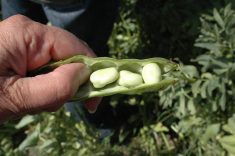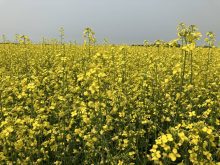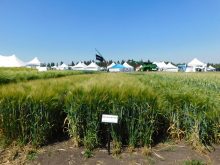Information is power and the more you know about your land, the better it will be when the land-man comes knocking on your door.
Knowing your soil and what your land needs is key when dealing with oil and gas developers, said Ron McNeil, a soil and land resource scientist and consultant.
“Get a good understanding of your land base, put that on an air photo and have a legend to go along with it,” he said.
Producers who are approached by oil and gas companies’ land-men need to know the practices of these companies and consider how that might affect them.
Read Also

New crop insurer policy enables easier startup for faba beans
Agriculture Financial Services Corporation updated its normals for faba beans, which may open the door for more Canadian producers to feel comfortable growing the pulse crop in the future.
“What are the better practices that you know should be done and that you would like to see done at that site?” McNeil asked.
Producers also need to consider all phases of activity, from construction and welding to daily operations and, finally, reclamation and long-term monitoring.
“Make sure your conditions are stated in the agreement,” McNeil said. “That will be the template that will be followed throughout the process.”
Producers should know the location of the proposed project, how workers will get to the site, the timing of the construction, how the soil will be handled, and what equipment will be used.
“You can have a say in all of these things and make your recommendations,” said McNeil. “It’s your land and they are using the surface of it for access and orientation. Putting down conditions goes a long way to helping you.”
Mapping land according to range sites will give producers intimate knowledge of how various soils on the land should be managed, McNeil said. These types of maps can also be good tools for environmental farm plans and thinking about how land can be related to different land use effects, protecting important habitats, and negotiating possible oil and gas deals.
———
“Youcanhaveasayinallof thesethingsandmakeyour recommendations.It’syour landandtheyareusingthe surfaceofitforaccessand orientation.Puttingdown conditionsgoesalongwayto helpingyou.”
Ron McNeil















